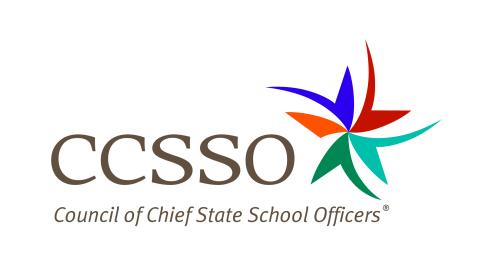
In April 2023, CCSSO convened state chiefs and national education leaders for Imagining More: A Summit on Modernizing Our Education System to elevate the urgency and momentum for embracing the lessons learned from the COVID-19 pandemic to drive systemic improvements to how schools serve students. The idea behind the Summit was to capitalize on the energy around this moment and have honest discussions about moving from pockets of change in education to systemic transformation focused around addressing the following key questions:
- How does the state set conditions for redefining how we think about school? The pandemic accelerated the need to embrace new ways of delivering content to students, such as virtual and hybrid learning models. New policies are needed to support new delivery models. Community partners demonstrated support for school communities in new ways that have the potential for long-term impact.
- How does the state set conditions for student-centered learning in schools? To support students in maximizing their potential, there is an opportunity to create transformative learning opportunities that are uniquely tailored to students’ individual strengths, needs and interests. New policies may be needed to foster this change by removing barriers to allow districts and schools to explore different staffing models.
- How does the state set conditions for defining mastery? There is increasing urgency to move beyond the traditional approach of the Carnegie Unit to recognize that time alone is not an adequate measure of mastery of content. Mastery may be measured both within the school walls and outside through career pathways and other learning opportunities.
While innovation often looks different from one school district to the next, the convening provided an opportunity for sharing best practices from schools’ creative pandemic approaches to leverage the energy from what worked and create the conditions for the innovations needed to transform the K-12 education system. There was no shortage of topics covered in the one-day Summit, and CCSSO is working to compile a report of key action items for states coming out of these discussions. For now,–here are a few key themes that emerged around student-centered approaches, honest engagement with stakeholders, and ensuring that where we invest our resources, time and people are aligned with our true priorities.
Honest engagement with key stakeholders: “You need to innovate with the community not to the community,” Michael Horn, co-founder, Clayton Christensen Institute for Disruptive Innovation, advised at the Summit and several state examples were elevated:
- In Rhode Island, state education leaders are asking parents to lead the conversation around how public schools are delivering on their promise to families and the community. The state is using this feedback to inform its success metrics, requirements for secondary education and re-defining of its course credits system.
- In Maryland, the Baltimore City Public Schools district leadership is leveraging its existing paraprofessional staff to help with early literacy gains in the community they are already a part of to provide a natural bridge from schools to everyday life.
Outside-the-box, student-centered approaches: “The pandemic was an opportunity to clear the air. A lot of the things we thought didn’t work or did work became a lot crisper post the disruption, which allowed us to hone in on innovations,” Sonja Brookins Santelises, chief executive officer, Baltimore City Public Schools shared with Summit participants and states provided real-world examples of innovations in action:
- In New Hampshire, education leaders are working outside the system to help forge change with the “Learn Everywhere” program, which is creating out-of-school learning experiences for students and testing new premises. Expanding beyond the traditional thinking of a school building and teacher being the only way to learn, the state is working under the premise that students are inherently curious learning machines and learning is not limited to time and place.
Priority alignment with resources, time and people: Many speakers during the Summit focused on where leaders put resources, time and people are their priorities. State chiefs are ready to seize the lessons learned from the last three years and ensure these pieces are aligned. Some examples around human capital shared include:
- North Carolina is seeking to pilot a pathway for advanced teaching roles to address the attrition of new teachers in the state. Leaders here are rethinking the autonomy they give teachers and making sure adequate supports and resources are in place for new teachers, especially around system changes.
- Utah leaders are creating avenues for advancement for teachers and school staff that allow them to grow in their careers. The state’s Grow Your Own Educator program provides scholarships and stipends to current paraeducators to help them become licensed teachers. This summer, the program will be expanded to provide the opportunity for those working in Utah's LEAs to become licensed school counselors, school psychologists, and school social workers. Utah has currently provided $6.8 million for the program, with an additional $7.1 million appropriated for the next school year.
Additional examples of states leading on innovation and more is available here.
You May Also Be Interested In ...
